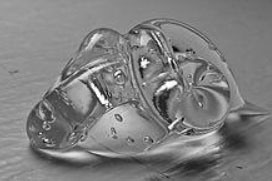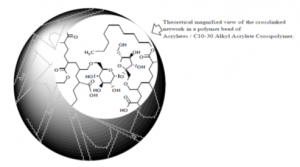[av_section min_height=“ min_height_px=’500px‘ padding=’default‘ shadow=’no-shadow‘ bottom_border=’no-border-styling‘ bottom_border_diagonal_color=’#333333′ bottom_border_diagonal_direction=’scroll‘ bottom_border_style=’scroll‘ scroll_down=“ id=“ color=’main_color‘ custom_bg=“ src=“ attach=’scroll‘ position=’top left‘ repeat=’no-repeat‘ video=“ video_ratio=’16:9′ video_mobile_disabled=“ overlay_enable=“ overlay_opacity=’0.5′ overlay_color=“ overlay_pattern=“ overlay_custom_pattern=“ av_uid=’av-4y9vea‘]
[av_heading heading=’Carbomer SAT- 250 ‘short flow’ Verdicker, aromatenfrei‘ tag=’h1′ link_apply=“ link=“ link_target=“ style=’blockquote modern-quote‘ size=“ subheading_active=“ subheading_size=’15‘ margin=“ padding=’10‘ color=“ custom_font=“ custom_class=“ admin_preview_bg=“ av-desktop-hide=“ av-medium-hide=“ av-small-hide=“ av-mini-hide=“ av-medium-font-size-title=“ av-small-font-size-title=“ av-mini-font-size-title=“ av-medium-font-size=“ av-small-font-size=“ av-mini-font-size=“][/av_heading]
[av_three_fourth first min_height=“ vertical_alignment=’av-align-top‘ space=“ margin=’0px‘ margin_sync=’true‘ padding=’0px‘ padding_sync=’true‘ border=“ border_color=“ radius=’0px‘ radius_sync=’true‘ background_color=“ src=“ attachment=“ attachment_size=“ background_position=’top left‘ background_repeat=’no-repeat‘ animation=“ mobile_display=“ av_uid=’av-4htyr6′]
[av_table purpose=’tabular‘ pricing_table_design=’avia_pricing_default‘ pricing_hidden_cells=“ caption=“ responsive_styling=’avia_responsive_table‘ av_uid=’av-fvlci‘]
[av_row row_style=“ av_uid=’av-45qb42′][av_cell col_style=“ av_uid=’av-42mbh6′]CAS-Nummer[/av_cell][av_cell col_style=“ av_uid=’av-3u1vb6′]9003-01-4[/av_cell][/av_row]
[av_row row_style=“ av_uid=’av-3rzdze‘][av_cell col_style=“ av_uid=’av-3lqc4q‘]Einecs-Nummer[/av_cell][av_cell col_style=“ av_uid=’av-c6x42′]-[/av_cell][/av_row]
[av_row row_style=“ av_uid=’av-3a4gx6′][av_cell col_style=“ av_uid=’av-311z2a‘]INCI-Bezeichnung[/av_cell][av_cell col_style=“ av_uid=’av-2ufs7u‘]Carbomer[/av_cell][/av_row]
[av_row row_style=“ av_uid=’av-2qytre‘][av_cell col_style=“ av_uid=’av-2k5jii‘]International nonpropietary name (INN)[/av_cell][av_cell col_style=“ av_uid=’av-2g6mga‘]-[/av_cell][/av_row]
[av_row row_style=“ av_uid=’av-2998tu‘][av_cell col_style=“ av_uid=’av-23ondm‘]Artikelnummer[/av_cell][av_cell col_style=“ av_uid=’av-1y1kf6′]445060[/av_cell][/av_row]
[/av_table]
[av_icon_box position=’left‘ icon_style=“ boxed=“ icon=’uf1c1′ font=’satcotek‘ title=’Technisches Datenblatt PDF‘ link=’manually,https://www.satcotek.com/wp-content/uploads/2020/09/Carbomer-SAT-250-tds-de-Satcotek.pdf‘ linktarget=’_blank‘ linkelement=’both‘ font_color=“ custom_title=“ custom_content=“ color=’custom‘ custom_bg=“ custom_font=’#b02b2c‘ custom_border=“ av-medium-font-size-title=“ av-small-font-size-title=“ av-mini-font-size-title=“ av-medium-font-size=“ av-small-font-size=“ av-mini-font-size=“ av_uid=’av-1riyfm‘ admin_preview_bg=“][/av_icon_box]
[av_icon_box position=’left‘ boxed=“ icon=’uf1c1′ font=’satcotek‘ title=’Sicherheitsdatenblatt PDF‘ link=’manually,/wp-content/uploads/2017/03/Carbomer-SAT-250-260-_D-de_10.pdf‘ linktarget=’_blank‘ linkelement=’both‘ font_color=“ custom_title=“ custom_content=“ color=’custom‘ custom_bg=“ custom_font=’#b02b2c‘ custom_border=“ av_uid=’av-1lmjtu‘][/av_icon_box]
[/av_three_fourth][av_one_fourth min_height=“ vertical_alignment=’av-align-top‘ space=“ margin=’0px‘ margin_sync=’true‘ padding=’0px‘ padding_sync=’true‘ border=“ border_color=“ radius=’0px‘ radius_sync=’true‘ background_color=“ src=“ attachment=“ attachment_size=“ background_position=’top left‘ background_repeat=’no-repeat‘ animation=“ mobile_display=“ av_uid=’av-1cl9ya‘]
[av_image src=’https://www.satcotek.com/wp-content/uploads/2016/10/SAT-PO310chem-1.png‘ attachment=’688′ attachment_size=’full‘ align=’center‘ styling=’no-styling‘ hover=“ link=“ target=“ caption=“ font_size=“ appearance=“ overlay_opacity=’0.4′ overlay_color=’#000000′ overlay_text_color=’#ffffff‘ animation=’no-animation‘ av_uid=’av-1bczte‘][/av_image]
[/av_one_fourth][/av_section][av_section min_height=“ min_height_px=’500px‘ padding=’small‘ shadow=’no-shadow‘ bottom_border=’no-border-styling‘ bottom_border_diagonal_color=’#333333′ bottom_border_diagonal_direction=“ bottom_border_style=“ id=“ color=’main_color‘ custom_bg=“ src=“ attachment=“ attachment_size=“ attach=’scroll‘ position=’top left‘ repeat=’no-repeat‘ video=“ video_ratio=’16:9′ overlay_opacity=’0.5′ overlay_color=“ overlay_pattern=“ overlay_custom_pattern=“ av_uid=’av-146sai‘]
[av_two_third first min_height=“ vertical_alignment=“ space=“ custom_margin=“ margin=’0px‘ padding=’0px‘ border=“ border_color=“ radius=’0px‘ background_color=“ src=“ background_position=’top left‘ background_repeat=’no-repeat‘ animation=“ mobile_display=“ av_uid=’av-3202a‘]
[av_textblock size=“ font_color=“ color=“ av_uid=’av-pln76′]

Es gibt eine große Zahl anorganischer (Silica, Bentonit) und cellulosebasierter Verdicker. Daneben sind hauptsächlich Acrylsäurepolymere in der Kosmetik bevorzugt.
Carbomere sind häufig weiße, lockere, hygroskopische Pulver. Klassisch sind es die Polyacrylsäure-Carbomere mit denen mehr als 50 Jahre Erfahrung in der kosmetischen Anwendung vorliegen. Die Carbomer Polymere sind hochmolekulare, nichtlineare Polymere von Acrylsäure, die mit einem Polyalkenylpolyether quervernetzt sind. Chemisch gesehen sind es Homopolymere von Acrylsäuren die mit Polyalkoholallylethern vernetzt sind.
Als solche in Wasser dispergiert zeigen sie einen pH-Wert von ca.2,5. Im neutralen und schwach alkalischen Bereich bilden die Carboxylgruppen Salze die erhebliche Mengen Wasser binden können. Je nach Polymerisationsgrad und Vernetzungsdichte lassen sich zudem unterschiedliche Eigenschaften erzielen.
Herstellung: Prinzipiell kann man von Acrylsäure ausgehen, die radikalisch polymerisiert wird oder von den entsprechenden Polyacrylnitrilvorstufen, die verseift werden. Außerdem können Polyacrylsäuren durch oxidative Polymerisation aus Acrolein und Wasserstoffperoxyd hergestellt werden. Im speziellen Fall erhält man durch radikalische Polymerisation der Acrylsäure in Gegenwart von Peroxyden (Wasserstoffperoxyd, Peroxodisulfat, Dibenzoylperoxyd), Azoverbindungen oder anderen Radikalbildnern Polyacrylsäure. Zur Copolymerisation werden Allylether von Pentaerythritol oder Saccharose (0,75 bis 2 %) als Vernetzungsmittel verwendet
Verwendung: Carbomere und ihre Natriumsalze werden in kosmetischen Produkten insbesondere zur Emulsionstabilisierung und zur Kontrolle der rheologischen Eigenschaften in Konzentrationen von bis zu 50% eingesetzt. (Verdickung) Bei wässrigen und isopropanolhaltigen transparenten Gelen liegen die Carbomer-Konzentrationen normalerweise bei 0,5%. Nach Dispergieren in Wasser und Neutralisation mit Alkalihydroxiden oder Aminen ist Carbomer unter Gelbildung klar löslich. Der optimale pH-Wert der die beste Verdickungswirkung zeigt liegt, je nach Typ, zwischen pH 5 und pH 10. Wobei einige Carbomere bereits bei pH 4 eine relative deutliche Verdickungswirkung haben. Das zunächst „geknäult“ vorliegende polyanionische Kolloid erfährt durch die Dispergierung in Wasser eine gewisse „Entknäulung“ und durch die Neutralisation eine „Streckung“ der Moleküle.
In der Regel werden die verschiedenen Carbomer-Typen unter Verwendung von organischen Lösungsmitteln hergestellt, z.B. Benzol, Ethylacetat und Cyclohexan. Die Rest-Lösungsmittelgehalte schwanken je nach Carbomer-Typ von ca. 0,01% bis zu 1%.

Die geladenen Gruppen stoßen sich ab, die Ketten entfalten sich und geben Raum für die Einlagerung von Wasser.

Die Weiterentwicklung der Polyacrylsäureverdicker führte zu den hydrophob modifizierten Verdickern, bei denen längere, hydrophobe, Kohlenwasserstoffketten einpolymerisiert wurden. Es sind Polymere aus Acrylsäurealkylestern (C10-C30), Acrylsäure, Methacrylsäure und/oder anderen Alkylacrylaten; kreuzverknüpft mit Propenyl-(allyl-)modifizierten Zuckern:

Diese 10-30-Aklyl Acrylat Crosspolymere zeigen in vielen Rezepturen bessere Eigenschaften und werden vermehrt eingesetzt. Sie ergeben klarere Gele und sind besonders leicht dispergierbar. Daneben sind sie besser Tensid und Elektrolyt tolerant als die einfachen Polyacrylsäure Verdicker. Für die Carbomere und vernetzten Acrylsäurepolymere ist vom CIR-Panel 2011 eine Sicherheitsbewertung veröffentlicht worden (Crosslinked Alkyl Acrylates as Used in Cosmetics). Die Polymeren sind als unbedenklich eingestuft worden sofern sie frei von Benzolrückständen aus der Produktion sind. Satcotek bietet auschließlich Carbomere an die ohne Verwendung aromatischer Kohlenwasserstoffe hergestellt und damit sicher in der Anwendung sind.
[/av_textblock]
[/av_two_third][av_one_third min_height=“ vertical_alignment=’av-align-top‘ space=“ margin=’0px‘ margin_sync=’true‘ padding=’0px‘ padding_sync=’true‘ border=“ border_color=“ radius=’0px‘ radius_sync=’true‘ background_color=“ src=“ attachment=“ attachment_size=“ background_position=’top left‘ background_repeat=’no-repeat‘ animation=“ mobile_display=“ av_uid=’av-ma3yi‘]
[av_hr class=’invisible‘ height=’15‘ shadow=’no-shadow‘ position=’center‘ custom_border=’av-border-thin‘ custom_width=’50px‘ custom_border_color=“ custom_margin_top=’30px‘ custom_margin_bottom=’30px‘ icon_select=’yes‘ custom_icon_color=“ icon=’ue808′ font=’entypo-fontello‘ av_uid=’av-ds2ze‘]
[av_button label=’Produkt anfragen‘ link=’page,18′ link_target=“ size=’large‘ position=’right‘ icon_select=’yes‘ icon=’ue875′ font=’entypo-fontello‘ color=’green‘ custom_bg=’#444444′ custom_font=’#ffffff‘ av_uid=’av-6n9m2′]
[/av_one_third]
[/av_section]
